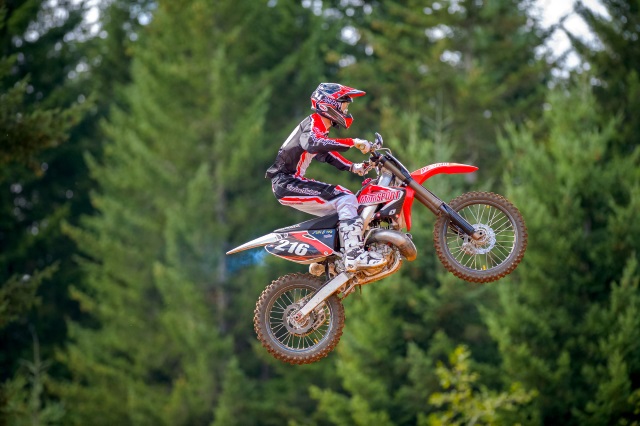
No one likes the yearly check-up. It's intrusive, a bit uncomfortable and sometimes leads to a diagnosis we don't want to hear.
But to keep our dirt bike running at tip-top shape it's necessary to conduct some diagnostics and complete a thorough examination. If your dirt bike is a bit sluggish or it's been a while since you gave it a once-over set up an exam room in the garage, put on some gloves, grab your tools and get to work.
Routine Blood Tests
Check oil, coolant and brake fluid levels to ensure you're running enough of each. Low levels might indicate a leak or burning. If you're near the service interval replace with fresh fluid. Also check the color of the brake fluid. If it's dirty, it's time to flush the lines and replace.
Check your dirt bike's "blood"
Listen to the Lungs
Check the air filter and replace if dirty. Also, clean the airbox and check for cracks or air leaks. Seal or replace, as needed. A dirty air filter ruins the engine over time but short term prevents enough air from passing through which affects the engine. Refer to How to Clean a Dirt Bike or ATV Air Filter for help on cleaning.
How well does your dirt bike "breathe"?
Listen to the Heart
Start the engine. Listen to how it sounds at idle and then slowly roll the throttle until it's open. This is a good way to hear if anything is affecting the performance of the engine. You can identify compression issues or jetting problems if the engine hesitates, back fires or stalls.
Grab a Stool Sample
While listening to the heart, check the color of the smoke spewing from the exhaust pipe. Your 2-stroke engine is a bit "gassy" and emits quite a bit of blue smoke. However, the 4-stroke engine burns much cleaner and you shouldn't see much smoke even though exhaust is flowing through. If you see anything other than blue smoke for the 2-stroke or any color on a 4-stroke consult with Smoke Signals: Exhaust Smoke Color for additional diagnostic measures.
It's a dirty job but somebody has to do it!
Digestion Issues
If you've been feeding your dirt bike a solid diet of gasoline without all that crappy ethanol you probably won't have many combustion issues but sometimes dirt clogs the fuel system or if you failed to drain the tank or add stabilizer over the winter you might have some gumming in the lines. Clogged fuel lines mimic so many other problems so cross this off the list if you're having performance problems.
Mobility
How well does your dirt bike get around? If you've noticed the clutch slipping on recent rides it might be time for a replacement. You'll want to check the thickness of the drive plate, pressure plate surface and the fiber thickness on the pads. While you're at it, check out the clutch basket and hub wear. Usually a new clutch includes all the plates as noted above but occasionally the whole thing needs replacing. Check out Dirt Bike Clutch Upgrade - What You Need to Know and When to Replace a Dirt Bike Clutch Pack for additional instruction.
Is your dirt bike riding well?
Fatigue Issues
Age eventually gets the best of everything including our dirt bikes but don't be so quick to fault the recent engine miss-starts or overall sluggishness to your early model ride. The solution might be as simple as a warn spark plug. Also, check the compression and jetting.
In a worst case scenario you might need a new top or bottom end, or both.
Just like in human medicine, many symptoms point to several issues requiring a little investigation. As long as you take good care of your dirt bike, feed it a healthy diet and perform routine maintenance it should last for years to come. Sooner or later though parts break from age or accident and need replacing. The quicker the fix usually prevents a cascade effect from damaging other parts or components thus giving you an expensive mechanic's bill or a dirt bike that's dead on arrival.












